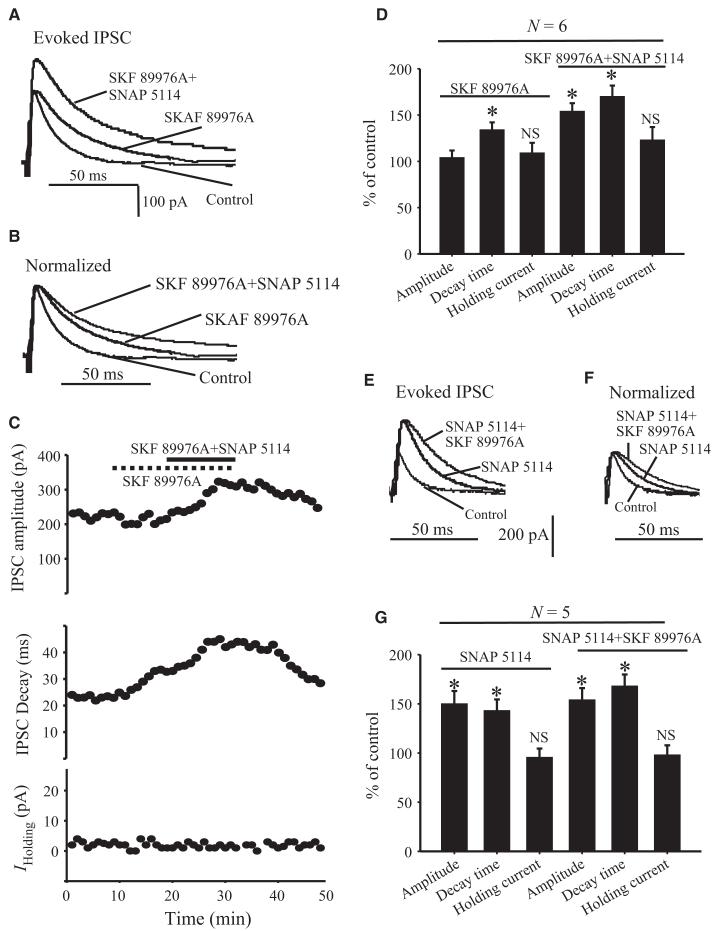Fig. 4.
Effect of application of GAT-1 and GAT-3 inhibitors on evoked GABAergic synaptic transmission in the rat GP. (A) Application of SKF 89976A (10 μm) alone increases the decay time, but not the amplitude, of IPSCs evoked in GP neurons by striatal stimulation (15 V) (middle trace). Both the decay time and the amplitude of eIPSCs are increased in the presence of SKF 89976A and SNAP 5114 (top trace). (B) The IPSCs recorded in the presence of SKF 89976A and SKF 89976A plus SNAP 5114 have been normalized to the IPSCs recorded under control conditions. (C) Time course of eIPSC amplitude (top), decay time (middle) and holding currents (bottom) in response to application of SKF 89976A alone (dashed line) or SKF 89976A combined with SNAP 5114 (solid line). (D) Bar graph summarizing the effects of SKF 89976A alone or combined with SNAP 5114 on eIPSC amplitude, decay time and holding current expressed as percentage of control ± SEM (*P = 0.001) in response to striatal stimulation (15–20 V). (E) Application of SNAP 5114 alone (middle trace) increased both the amplitude and decay time (second trace) of eIPSCs. The decay time was further increased when SNAP 5114 was applied together with SKF 89976A (top trace). (F) The IPSCs recorded in the presence of SNAP 5114 and SNAP 5114 + SKF 89976A have been normalized to the IPSCs recorded under control conditions. (G) Bar graph summarizing the effects of SNAP 5114 alone or together with SKF 89976A on eIPSC amplitude, decay time and holding current expressed as percentage of control ± SEM (*P = 0.001). N, number of cells tested; NS, not significant.

